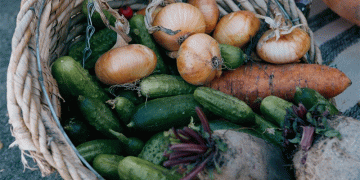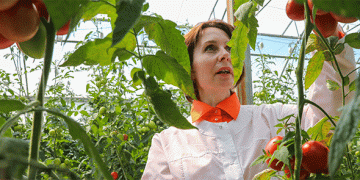As the monsoon gains traction, the price of vegetables has soared drastically in the Kathmandu Valley, pushing up kitchen costs. Daily essentials like ginger, green chillies, tomatoes, and potatoes are becoming prohibitively expensive for ordinary people.
Traders attribute the price hike to a drop in production due to low rainfall during the pre-monsoon period (March-May). Recent heavy rainfall has caused floods and landslides, disrupting the supply chain. Additionally, a winter drought reduced output before spring.
Vegetable prices have steadily increased over the past few months. According to the macroeconomic report of Nepal Rastra Bank, the country’s central bank, vegetable prices, as measured by the consumer price index, were up 23.11 percent in mid-May. Tomatoes, potatoes, onions, cauliflower, cowpeas, French beans, bitter gourd, smooth gourd, squash, okra, leafy vegetables, button mushrooms, broccoli, lime, green chilli, capsicum, and cucumbers became pricier within a month.
Binay Shrestha, information officer at the Kalimati Fruits and Vegetable Market Development Board, the country’s largest vegetable trading centre, said the supply of home-grown vegetables had dwindled since winter. The shortfall is met with imports, mainly from India. As soon as the monsoon started, flooding and landslides affected the supply system, sending prices high. There are no signs of the prices falling. “Naturally, vegetable prices rise during the monsoon as rainfall impacts output and supply,” Shrestha added.
The Kalimati fruits and vegetable market is receiving vegetables in smaller volumes these days. Before the monsoon, the market received 700 tonnes of vegetables daily, but it has now dropped to 500 tonnes. The monsoon season in Nepal generally begins on June 13 and ends on October 2. This year, the phenomenon entered Nepal from the southwest on June 10, three days ahead of the usual onset date. The comparative supply figure shows that the daily vegetable arrival in the Kalimati fruits and vegetable market declined 7 percent within a month.
Tomato, potato, and onion prices have seen significant fluctuations. The average wholesale price of large Nepali tomatoes increased by 36.36 percent to Rs75 per kg within a month. However, the price of small tomatoes produced in plastic tunnels has declined by 42.17 percent to Rs22.67. Shrestha said tomato prices in the summer fall due to increased production as tunnel farming is not affected by rains, and new farming systems have flourished.
On June 18 last year, farmers threw around 90 tonnes of tomatoes on the road outside the Kalimati fruits and vegetable market to vent their anger at the low prices they were getting. The price of large Nepali tomatoes had plummeted to Rs35 per kg. Shrestha expected that the tomato price would not dip any lower

































